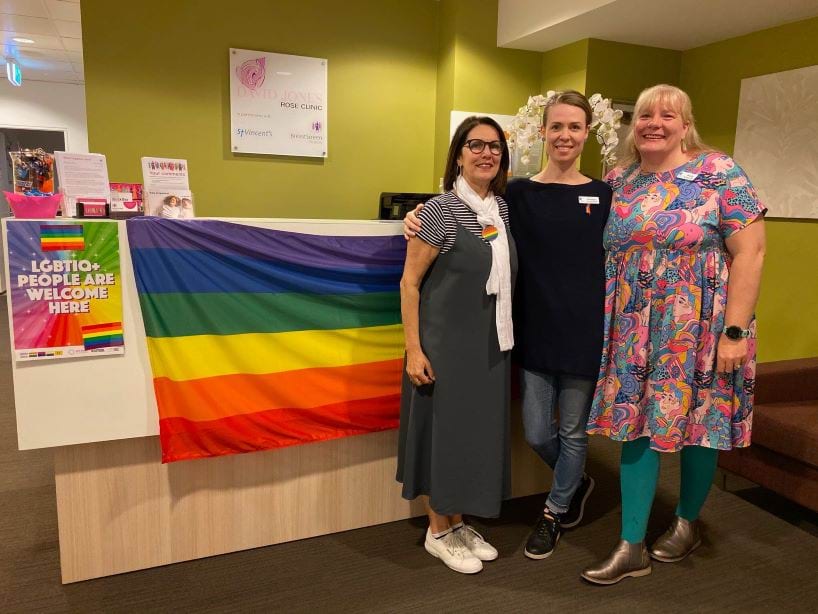Background
BreastScreen Victoria is part of BreastScreen Australia, the national breast cancer screening program, that provides people aged 50–74 with free breast screens every 2 years.
The BreastScreen Victoria team were reporting that they had been screening trans and gender diverse people, but that there was a gap in information as BreastScreen Australia had no guidelines or policy for screening trans and gender diverse people. BreastScreen Australia identified that the program should provide tailored information for trans and gender diverse people to inform their decisions about routine breast screening. BreastScreen Victoria needed to develop an internal policy and education program so the team could provide a better service to the community.
Actions
In developing a policy on screening for trans and gender diverse people, BreastScreen Victoria used a gender impact assessment approach. They established a subgroup of their existing LGBTI Advisory Group, the ‘TGD Expert Advisory Group’, to provide advice. There was limited clinical evidence to draw on due to a lack of evidence on breast cancer risk and appropriate screening for trans and gender diverse people. BreastScreen Victoria drew on 2 international clinical guideline papers as well as the experience of senior clinical staff, and a multidisciplinary Clinical Reference Group. While the greatest weight was given to the evidence of reduction in the impact of breast cancer, it was also recognised that there was a social benefit to screening for trans women.
BreastScreen Victoria does not capture data about the gender identity of its clients so had no information available about the number of trans and gender diverse people accessing its services. Recognising this data gap, BreastScreen Victoria conducted a survey of trans and gender diverse people in Victoria to seek feedback on the development of inclusive services and hosted a forum to further explore and understand these issues.
The survey was completed by 34 trans and gender diverse people from across Victoria, and the forum was attended by representatives from Transgender Victoria, the Victorian Commissioner for LGBTIQ+ Communities, academics, clinical and project staff in addition to trans and gender diverse people.
Outcomes
As a result of the review of the evidence, survey, and consultation, a series of options and recommendations were developed. This included the development of a trans and gender diverse people screening policy and the provision of education for BreastScreen Victoria staff.
The new policy allowed for the development of tailored information for trans and gender diverse people. The information sheet was developed through consultation including multiple contributions with BreastScreen Victoria’s TGD Expert Advisory Group, as well as their broader LGBTI Advisory Group.
BreastScreen Victoria is focused on ensuring screening clinics are welcoming and inclusive spaces, and that all LGBTI people have the opportunity to provide feedback on inclusivity.
In March 2019, BreastScreen Victoria achieved a significant milestone when BreastScreen Victoria's Coordination Unit and Mobile Screening Service achieved a Rainbow Tick accreditation for its commitment to safe and inclusive practice – a first for a breast screening service in Australia.
For further information on BreastScreen Victoria’s trans and gender diverse services and policy, visit www.breastscreen.org.au/community-support/trans-and-gender-diverse-people/.
Updated


